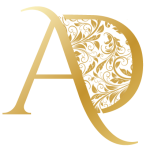FYZICAL Therapy & Balance Center Coral Springs
CONTACT
2234 N University Dr, Coral Springs, FL 33071
(954) 779-4549
FROM DR. JASON R. @ FYZICAL
Concussion Rehabilitation: Effective Strategies for Faster Recovery
Concussions are a type of brain injury that can happen to anyone, at any age. Rehabilitation is crucial for a full recovery. This guide walks you through effective concussion rehabilitation strategies to help you or your loved one heal and return to daily life safely.
Introduction to Concussion Rehabilitation
A concussion is a brain injury caused by a hit or jolt to the head, leading the brain to move rapidly inside the skull. This movement can cause damage to brain tissue. Common symptoms include headaches, dizziness, confusion, and memory loss.
Rest is essential after a concussion. A structured rehabilitation program supports brain healing, encourages gradual return to activity, and helps prevent future injuries. Light exercise—introduced gradually under medical supervision—can aid in recovery. Monitoring symptoms and following professional advice are key to success.
Initial Steps Post-Concussion
Immediate Rest
After a concussion, the most important first step is rest:
- Avoid physical activities
- Limit screen time (TV, phones, computers)
- Rest in a quiet environment
- Stay hydrated
- Eat nutritious meals
- Get plenty of sleep
Medical Evaluation
See a healthcare provider promptly:
- Receive a thorough examination
- Follow medical advice strictly
- Report all symptoms, even mild ones
- Attend follow-up appointments to track progress
Creating a Personalized Recovery Plan
A specialist will assess your condition using tests for memory, vision, balance, and coordination. Based on the results, a custom recovery plan is created.
Setting Goals
Recovery goals should be:
- Personalized and achievable
- Focused on reducing symptoms (e.g., headaches, dizziness)
- Aimed at regaining mental and physical function
Celebrate small victories along the way to stay motivated.
Physical Therapy Techniques
Balance Training
Improving balance strengthens core stability and coordination:
- Stand on one leg for 10 seconds; switch legs
- Walk heel-to-toe in a straight line
- Use support (e.g., a chair) if needed
Strength Training
Start with light exercises to rebuild strength:
- Use resistance bands or light weights
- Focus on core, leg, and arm muscles
- Include exercises like squats and lunges
- Perform 10–15 reps per set with rest in between
Cognitive Rehabilitation
Mental Rest
Avoid mentally demanding tasks such as:
- Reading
- Studying
- Watching TV
Take short naps and regular breaks. Gradually return to these tasks as symptoms improve.
Memory Exercises
Rebuild cognitive function through:
- Simple memory tasks (e.g., recalling item lists)
- Brain games and puzzles
- Daily practice for consistent progress
Lifestyle Adjustments
Sleep Hygiene
- Aim for 8+ hours of sleep
- Avoid screens an hour before bed
- Create a calming bedtime routine
- Keep the bedroom dark and quiet
Nutrition
- Eat a balanced diet rich in fruits, vegetables, lean proteins, and whole grains
- Drink plenty of water
- Limit caffeine and avoid sugary or processed foods
- Include Omega-3s (found in fish, nuts) for brain health
Monitoring Progress
Symptom Tracking
- Keep a daily symptom diary
- Record headaches, dizziness, sleep quality, mood, and energy
- Share logs with your healthcare provider for treatment adjustments
Regular Check-Ups
- Attend all scheduled follow-ups
- Discuss changes in symptoms
- Adjust your rehab plan as needed
Preventing Future Concussions
Use Protective Gear
- Always wear a properly fitted helmet during sports
- Use elbow pads, knee pads, and mouthguards for extra protection
Safe Habits
- Follow safety protocols in sports and work
- Make your home environment fall-proof
- Strengthen your body with regular exercise to improve resilience
Support Systems
Family Support
- Helps manage daily tasks
- Provides emotional encouragement
- Monitors changes in symptoms
- Reinforces the importance of rest and rehab
Support Groups
- Offer shared experiences and emotional support
- Provide recovery tips
- Create a sense of community and accountability
Frequently Asked Questions
How do you rehabilitate a concussion?
Rehabilitation includes rest, gradual reintroduction to physical and cognitive activity, hydration, proper nutrition, and medical supervision.
What is the recovery time for a concussion?
Most people recover within 7 to 14 days. Severe cases may take longer. Always follow medical advice.
What activities should you do when you have a concussion?
Initially, avoid strenuous activity and screen time. Slowly reintroduce light tasks as symptoms subside. Consult your doctor before resuming exercise or work.
What are the 4 steps of recovering from a concussion?
- Rest and avoid stimulation
- Gradual return to light activity
- Slow resumption of cognitive tasks
- Follow-up with healthcare providers
Conclusion
Recovering from a concussion takes patience, discipline, and support. By following medical guidance, getting adequate rest, maintaining a healthy lifestyle, and tracking your progress, you can ensure a smooth and effective recovery.
Stay committed to your rehabilitation plan—your brain deserves it.

